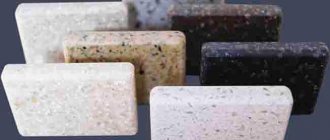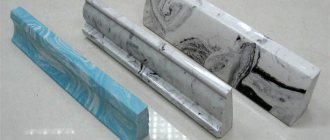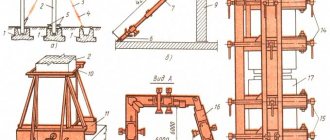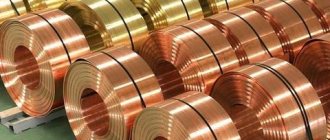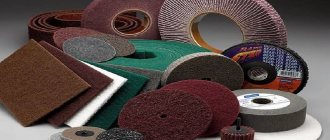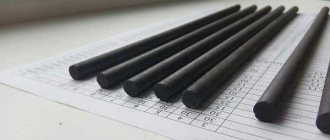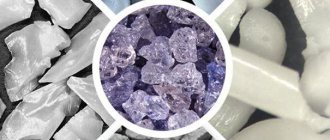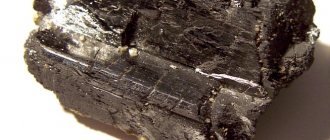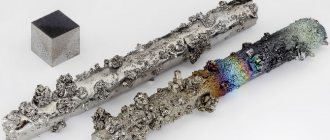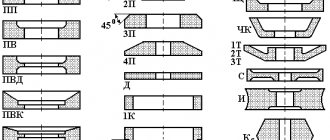Marble is considered one of the most attractive materials in terms of aesthetic and technical and operational qualities. However, the use of this stone is accompanied by difficulties in processing and transportation. And this is not to mention the high cost of natural mineral. Actually, the same situation is observed with a number of other rocks, including granite. Technology for the production of artificial analogues allows one to get rid of such shortcomings. In particular, cast marble has a more affordable price and allows you to obtain the required shape of the final product at the manufacturing stage. This can be an interior item, a purely decorative element of garden decoration, or panels for cladding. Of course, in the case of composite materials we cannot talk about complete similarity with the natural prototype, but in terms of the main characteristics, the imitation justifies itself.
What is cast marble?
This is a material that is created on a polymer base with the inclusion of fillers. The production technology itself implies wide possibilities for changing the aesthetic properties of a given stone. Compared to natural marble, the composite analogue makes it possible to use any color shades, without being limited by the size of the product. It is also worth noting the difference from the classical technology for the production of artificial stones. Unlike materials created using cement, cast marble involves the use of polymers as a binding additive. It is thanks to this technological feature that high performance properties are achieved. Among them are: solidity, moisture resistance, optimal thermal conductivity, etc.
Varieties
The profile market offers buyers 2 types of flexible marble: sheet (cast) and tile. In this case, sheet flexible marble is divided into groups: stone wallpaper and facade slabs. Each type has its own characteristics.
- Stone wallpaper is thinner (usually 1-1.5 mm), reminiscent of wallpaper. Their width can reach up to 1-1.05 m, length does not exceed 2.6 m. Such artificial stone is more often used for finishing walls indoors.
- Facade type sheet material is a flexible rectangular sheet. Their thickness varies from 2 to 6 mm. Parameters can range from 500x250x2 mm to 1000x2500x6 mm.
- The tile is thicker than stone wallpaper; its thickness can range from 2 to 5 mm. Its classic dimensions are 340x555, 340x550, 160x265, 80x265 mm. Tiled (especially thick) series of material are usually used to decorate facades.
The variability of the size range contributes to the creation of any surface design . The frescoes deserve special attention. In this design, they retain their shape, brightness and color for a long time. The flexible stone can be decorated with lighting, which looks great in a modern interior. Color solutions are not limited: material in neutral and colored tones is available on sale.
If desired, you can choose the material to match the interior design, taking into account fashion trends. For example, today the fashion is white coating with a glossy surface type and streaks of gold (gray, beige) color. Coverings in neutral tones fit perfectly into the interior.
Matte and rough textures look great with antique furniture and are combined with decorative plaster. This facing material helps create the atmosphere of the desired era.
Manufacturing technology
Despite providing a wide range of positive qualities, the technological process for making marble is quite simple. For this purpose, enterprises use special matrix forms in which a pre-prepared raw material base is placed. The final product is formed by casting - the container is filled with a mixture of filler and additives, which subsequently hardens. At the same time, there are several methods by which cast marble is produced. The technology in the standard scheme involves the use of polyester resins. By adding this component, the output is a product that can be used in home decoration. It is this technology that is used to produce parts and full-fledged interior objects. In practice, the peculiarity of cast marble is felt even with ordinary touch - the material gives off heat. This quality distinguishes stone from natural marble and granite.
Product molds
Much in the quality of the implementation of the technological process depends on the equipment used, the main element of which is the mentioned form, that is, the matrix. There is ready-made equipment on the market, but in most cases, manufacturers purchase matrices on special order. The fact is that molds for cast marble determine what the final product will be like. Therefore, we are not talking about standards for the execution of such equipment - each manufacturer strives to make its products unique, therefore, the sketches of the matrices are developed as copyright ones with unique sizes and textures. Another thing is that in each case high demands are placed on the material used to make the molds. Usually a composite material is used, similar in characteristics to plastic, but, of course, much stronger and more durable.
Advantages and disadvantages
Molded facing building materials have many advantages. In addition to simplicity and ease of installation, it is distinguished by:
- variety of shapes, patterns, colors;
- resistance to various external influences (including abrasion, temperature changes, sunburn);
- possibility of use for internal (in dry and wet rooms) and external work;
- lightness, elasticity of structure and water resistance, ease of cutting;
- durability, variability of size range;
- inertness to combustion and spread of open fire;
- Possibility of use in large and small spaces;
- variety of texture and surface type (can be smooth or rough);
- decorativeness, sophistication, compatibility with different furniture and decoration;
- possibility of fixation on flat and curved bases without preliminary preparation;
- environmental friendliness, antistatic, inert to the formation of fungus and mold;
- vapor permeability, ease of maintenance and attractive cost.
If desired, such building material can be made with your own hands. Flexible marble is safe for people, pets and plants. Every head of the family can work with it. At the same time, this material does not weigh down the finished structure. At its core, cladding resembles wallpapering walls using seamless technology. Moreover, it is possible to paste rounded and geometric structures (up to spherical shapes).
At the same time, flexible marble can be glued in different ways (including frescoes and bricks). This allows you to change elements as needed without dismantling the entire cladding.
Along with its advantages, flexible marble has several disadvantages. For example, the price of a material depends on the production method. If it is done directly in a quarry, the price will be higher.
The price also depends on the cost of raw materials from different suppliers, as well as the place of production (imported cladding is more expensive than domestic one).
Some types of surfaces limit the permissible scope of application. For example, the textured and abrasive appearance of the structure (resembling coarse sandpaper) makes it difficult to care for the coating. When choosing a material, it is worth considering that, due to acrylates, the finished cladding must be washed with detergents without alkali. Despite the fact that the material does not require special preparation of the base, it will not hide obvious surface imperfections (large bulges).
It is translucent; if the base is of a different color, spots may appear through the thin lining. It’s also bad that the material often doesn’t match in color. Therefore, when purchasing it, you need to pay attention to the batch number. Otherwise, it will not be possible to create a monolithic coating over a large treated area.
Raw materials for casting marble
In addition to the shape, such products also differ in composition. The standard set of components includes the addition of filler, polyester resin and gelcoat. The basis is the filler, which, by the way, is the most affordable component of the raw material set. Typically this component of the mixture is stone or concrete waste. As for gelcoat, it belongs to specialized additives. Thanks to this element, high strength and moisture resistance are achieved - properties that high-quality cast marble has. The production of the material also involves the addition of polyester resins. This is an important component due to which the product gains structural durability and optimal viscosity.
Products based on cast marble
The flexibility of the manufacturing process allows you to diversify the shapes and sizes of the resulting products. It is for this feature that the material is valued by lovers of original design solutions. Experts identify three main areas in which manufacturers of these products operate. The first group includes materials intended for cladding: tiles, facade panels, stone boards, etc. The second group includes products made of cast marble in the form of interior accessories and furniture. These can be tabletops, flowerpots, candlesticks, kitchen surfaces and other objects. However, the greatest interest among true connoisseurs of cast marble is caused by the products used to decorate staircase structures. Manufacturers create entire series in which you can find steps, handrails, balustrades and other accessories.
Types of artificial marble for flooring
In addition to casting, there are three more types of composite marble stone:
Microcalcite
Made from crushed white marble. Among the advantages of the material are low chemical activity, strength, resistance to moisture and various radiations.
Gypsum (touchstone)
According to the name, the basis for production is gypsum. The result is a lightweight, high-strength finishing material.
Liquid (flexible) marble
Extremely elastic and lightweight. The newest and most high-tech variety. The base is acrylic polymers and marble chips. Easy to process - it can be cut with a knife/scissors. Used as wall wallpaper, for finishing various surfaces and irregularly shaped structures.
Features of industrial cast marble
This type of artificial marble is also called polymer concrete. Its peculiarity lies in the absence of decorative qualities and increased properties of vibration and chemical resistance. These characteristics determined the scope of use of the material. It is usually used in structures that require protection from physical influences. In particular, cast marble for industrial use is used in the manufacture of platforms for machines and equipment, tanks for chemical compounds, breakwaters, drainage structures, etc. It must be said that in terms of durability and impact resistance, this material is significantly superior to traditional concrete structures.
Use and care instructions
Artificial marble is often used for decorating rooms and wall cladding. It makes beautiful tabletops, window sills, stairs, sculptures, and decorative fountains. The material is suitable for finishing house facades, emphasizing window and door openings, and creating paving slabs.
Artificial marble should be cleaned with a soft cloth, as hard brushes can leave scratches on it. It is washed using liquid SMS and does not use drying oil-based products for polishing. Otherwise, the material is considered quite unpretentious and, with the right approach, will last for many years.
Manufacturers
Domestic enterprises are still just mastering this technology, relying on the experience of foreign companies. However, you can find quite good quality products on the market. Such manufacturers of cast marble as Sanola, Avstrom and Decorlit demonstrate a high level of technical and operational indicators of their products. Also, a rich assortment is offered by the Royal Cream Stone company, which has its own enterprises in Kazakhstan and Europe. A special feature of the offers from these manufacturers is the possibility of cooperation on individual orders, which allows you to purchase cast marble products that are unique in shape and texture.
It is also worth noting that the production of marble using casting technology is also available to private craftsmen. The purchase of raw materials constitutes a minimal share of the total cost of the product. According to some calculations, a standard size tabletop has a cost of 500-600 rubles. Of course, to manufacture it, in addition to raw materials, you will also need special equipment in the form of the same matrix. Therefore, you should count on such an enterprise only if you regularly use the technology.
Characteristics of artificial stone
Not only marble made from concrete is called artificial stone, but also ceramic granite. The production technology of these materials is almost identical. But they are used in different ways.
Ceramic granite is considered harder and more resistant to mechanical damage, so it is more often than marble used for coatings in areas with intense pedestrian traffic: floors in shopping centers, supermarkets, subways, and transport centers. In residential premises, porcelain tiles are used to cover the walls and floors of hallways, kitchens, and bathrooms.
Marble is less durable, but thanks to the dyes it has a beautiful pattern. Its scope of application is tabletops and bar counters, railings of fences and stairs, decorative elements, plumbing components, window sills and artificial columns.
Custom concrete marble can come in almost any shape, color and pattern. These parameters depend solely on the imagination and solvency of the buyer.
Natural marble is in many ways inferior to its artificial counterpart. A tabletop made of natural material will weigh 3-4 times more than one of a similar shape and size - made of synthetic material.
The color palette of natural stone is limited, while artificial marble can be painted in any shade and can even be made to glow.
Reviews of cast marble
Of course, there are different materials on the market, but in the best examples, artificial stones even surpass the characteristics of natural analogues in some respects. Owners of furniture pieces, for example, note unique color and texture solutions. Over time, the texture on surfaces does not fade even under unfavorable operating conditions. The technical and physical advantages that cast marble has are also noted. Reviews, for example, emphasize the resistance of structures to destruction processes under the influence of external factors. Most of this marble allows direct contact with water, so it can be used both in the bathroom and outdoors. In both cases, owners do not note any harmful effects on the characteristics of the material.
Tips for choosing
When choosing which is better - cast marble or artificial stone, you need to focus on what product is needed and under what conditions it will be used. For example, to make an asymmetrical kitchen countertop with radial elements, you should prefer cast marble or acrylic.
For fans of classics and natural stone, quartz agglomerate will be most suitable, as it will not only exactly replicate the texture of granite, marble or malachite, but will also surpass them in performance characteristics.
For indoor stairs, especially if we are talking about a private house or a small institution, any of the options is suitable, but for rooms with high traffic, outdoor structures - only quartz agglomerate with a high level of strength.
Before making the final choice, it is worth consulting with a specialist.
